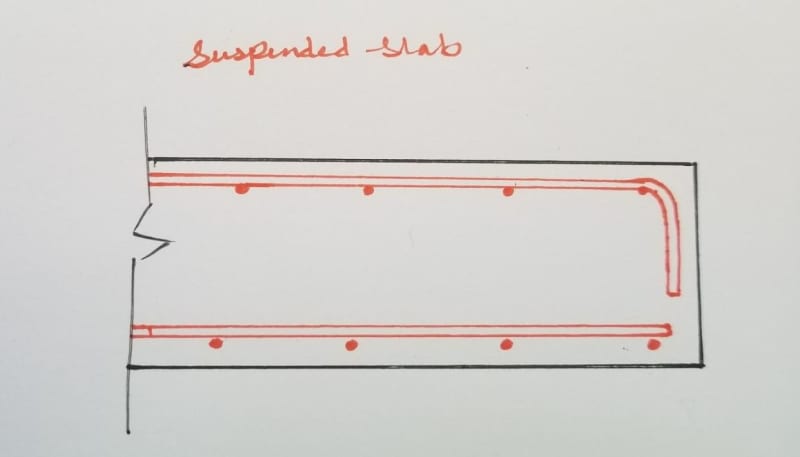I have many, and varied, thoughts on this.
1) I used to work for a structural firm that had a rather notable and charismatic founder. It predates me but, on many occasions, I heard tales of him walking around to supervise engineers and whacking them on the wrist with a slide rule if they put slab edge bars in like this (away from columns). "Why waste rebar where there is not tension!". Or so the legend went.
2) Interestingly, the Canadian codes has a provision requiring top steel at all free edges. They don't explain why nor do they specify quantity, length, or whether or not you need hooks. In theory, we could put #4 x 12" straight bars @ 48" o/c around the edges. In practice, we see a lot of #5 x 4'-0" @ 16" oc with the down turned 90's.
3) Theoretically, you probably don't need a hook at the slab edge unless you have a concentrated / line load at the slab edge. But, then, often times you do have that. Slab edges quite often wind up carrying walls etc. Sometimes even substantially loaded brick angles. In these cases, I do feel good about the hooks.
4) When there are concentrated / line loads, I do have a preference for the hook being turned down rather than laid flat. I believe that it's just generally good practice to orient hooks such that they restrain incoming struts in the hook knuckles. In this case, the strut would be coming up vertically from the bottom of the slab and, to me, that suggests a corresponding down turned hook. Of course demands for these things do tend to be pretty low so I doubt that this is terribly critical in practice.
5) I like hooks simply because there are often things getting anchored at slab edges and it feels good to have some reinforcing in the area to possibly restrain concrete breakout frustums and such. For this purpose, I don't feel that the orientation of the hooks are critical.

